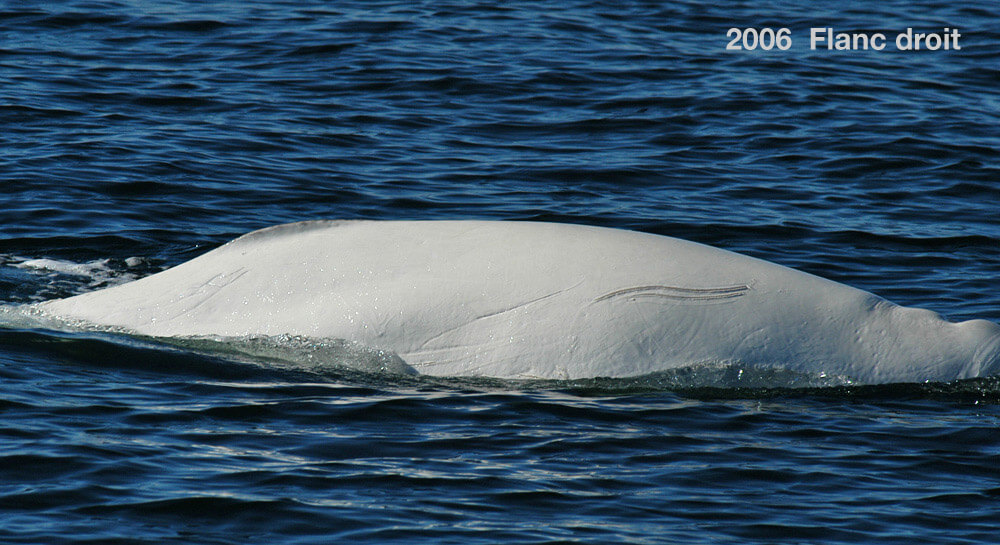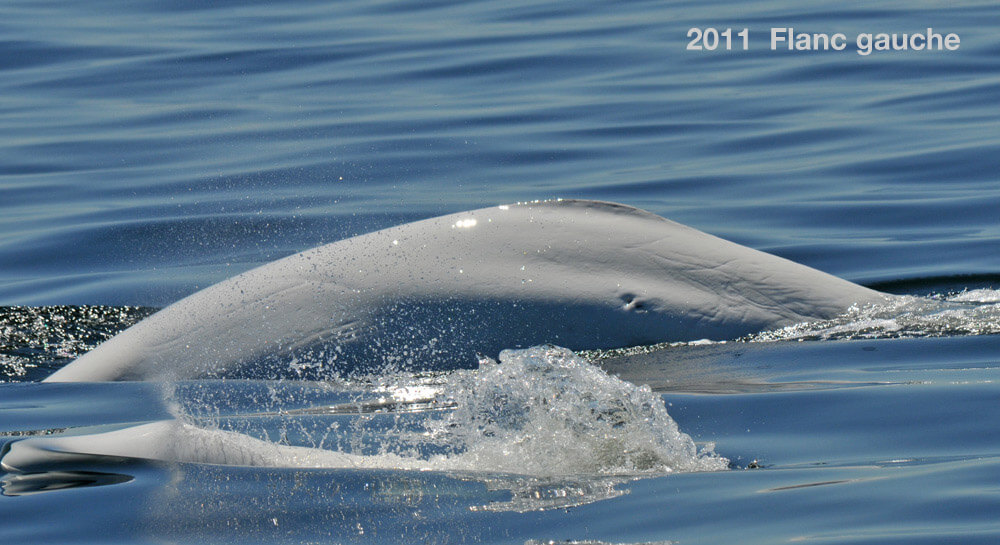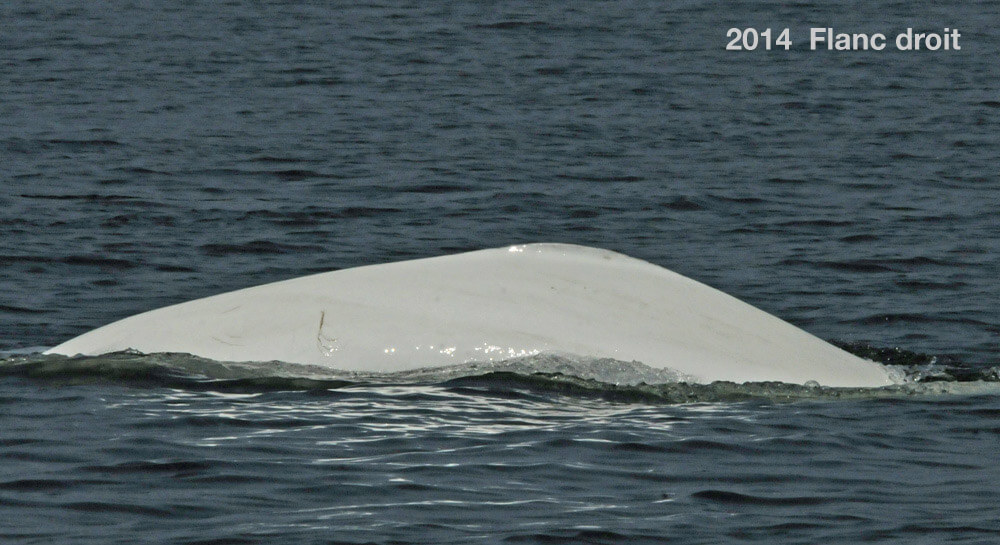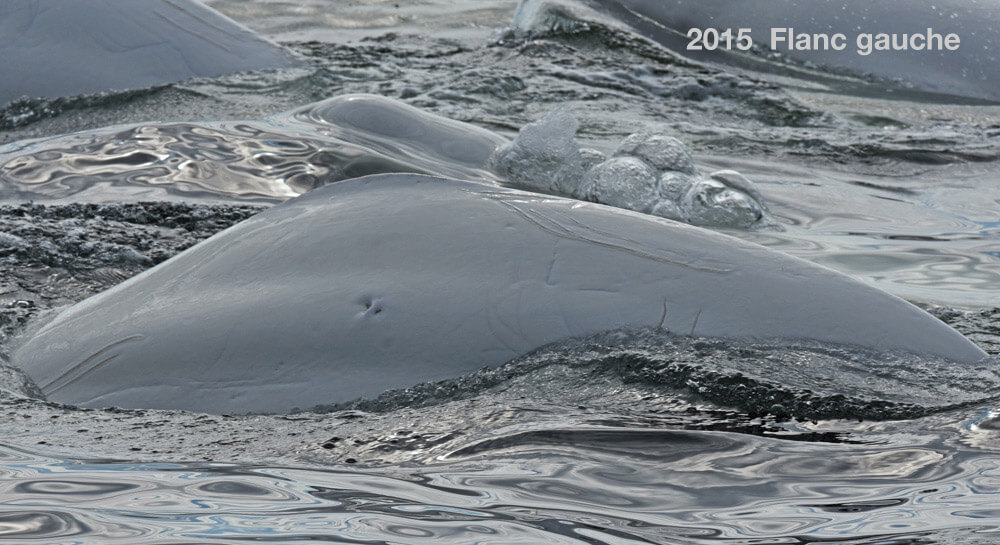Gaston
Beluga

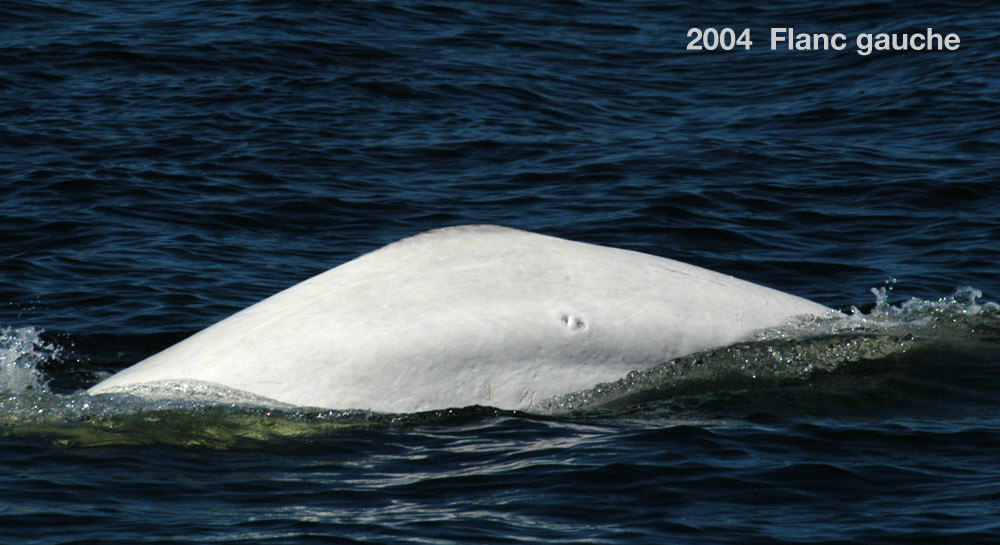
Adopted by the Pratte family
-
ID number
DL2217
-
Sex
Unknown
-
Year of birth
Around 1990
-
Known Since
2004
Distinctive traits
Gaston can be identified by two round scars, one opposite the other. Both scars are on its left flank muscle.
Life history
Our first meeting with Gaston took place on board our research boat, the Bleuvet, on July 6, 2004. At the time, Gaston’s skin was slightly gray. When we saw it again in 2006, its skin had turned completely white. Beluga whales change color from gray to white between the ages of 12 and 16. Gaston was born around 1990.
Its two characteristic scars make it easily recognizable from its left flank. Thanks to them, we’ve been identifying Gaston almost every year since 2013.
Its habits and company suggest that Gaston is a male. Indeed, it is frequently observed among large, very active herds in the downstream sector of its summer range, between Tadoussac and Les Escoumins. Two networks of males frequent the Saguenay, its mouth and part of the estuary up to Les Escoumins.
Within these networks, males form stable bands of mates. Gaston has been observed a few times in the company of Solidaire, DL0058 and Mirapakon. Will they become its mates? These associations are gradually establishing themselves and could play a role in the belugas’ reproductive life.
The rest of Gaston’s story will tell us a lot about the evolution of beluga whale social life. By understanding how belugas live, we can better protect them.
Observations history in the Estuary
Years in which the animal was not observed Years in which the animal was observed
Latest news
On board our inflatable research boat, the BpJAM, we cross the St. Lawrence toward Rivière-du-Loup in search of belugas on the south shore. We spot a small herd of 6 to 8 belugas. By the time we reach them, we discover three other groups each numbering 7 or 8 individuals. We photograph their left flanks first, then their right flanks. One beluga has conspicuous teeth marks on its back: it’s Gaston! Such markings are common on belugas, especially males. For a species without any limbs, teeth can be used for sociability. But in this case, perhaps Gaston just needed help with an itch? Who knows!
The excitement aboard our research vessel, the Bleuvet, is palpable. We’ve found a herd of around 150 belugas. We’re intrigued by these large gatherings. What are all these juveniles and adults doing together? The 150 belugas are not all side by side : instead, they are divided into four or five groups, quite close together. We start photographing the belugas one by one, trying to take their left and right flanks to identify them individually. That’s when we spot Gaston, recognizable by the two scars on his left flank.
This gathering certainly excites the belugas too. At the surface, pectorals and tails emerge from the water. Even pink spots contrast with the white skin and blue water: penises! But by the end of August, the breeding season should be long over! This isn’t the first time our team members have observed these behaviors outside the breeding season. Are these sessions some kind of training? Or is the breeding season longer than we thought? Certainly, we still have a lot to learn about the lives of St. Lawrence belugas.
Sponsor
The Pratte family adopted Gaston (2018).

